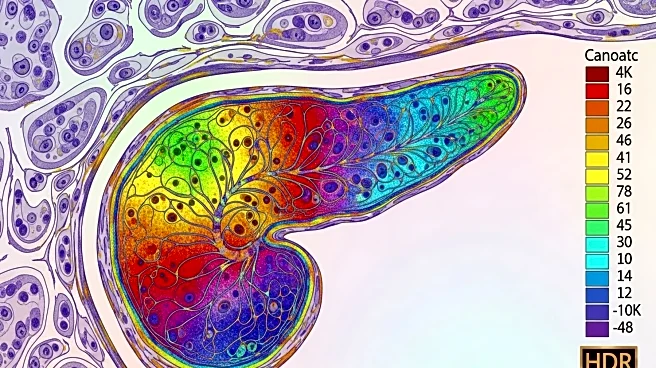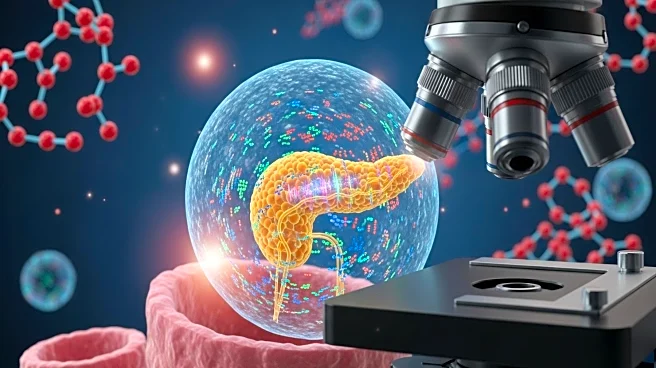What's Happening?
A new spatial transcriptomics dataset has been released, providing detailed gene expression profiles of pancreas sections from donors with normal glucose tolerance and type 2 diabetes. The dataset was processed using Space Ranger software, which generated gene expression values for thousands of spatial locations. The study involved histological reviews to verify tissue integrity and identify major features such as islets and vasculature. The dataset revealed substantial transcript bleed, which was corrected using computational methods, enhancing the accuracy of spatial gene expression data. This dataset offers valuable insights into the spatial distribution of gene expression in pancreatic tissues, which is crucial for understanding the biology of diabetes.
Why It's Important?
The release of this spatial transcriptomics dataset is significant for diabetes research, as it provides a high-resolution view of gene expression in pancreatic tissues. This data can help researchers understand the spatial organization of cell types and gene expression patterns in the pancreas, which is essential for identifying potential therapeutic targets for diabetes. The ability to correct for transcript bleed and accurately map gene expression enhances the reliability of the data, making it a valuable resource for future studies. This dataset could lead to new insights into the mechanisms of diabetes and inform the development of personalized treatment strategies.
What's Next?
Researchers are expected to use this dataset to conduct further analyses of transcriptional changes in the pancreas associated with type 2 diabetes. The data may be combined with other datasets to overcome donor-to-donor variation and provide a more comprehensive understanding of pancreatic biology. Future studies could focus on identifying novel gene targets and pathways involved in diabetes, potentially leading to the development of new therapeutic approaches. Additionally, advancements in spatial transcriptomics technology may improve resolution and enable more detailed analyses of gene expression at the single-cell level.











